Reviewing gaming history, as it happened.Read more about the project at ntscdreams.com
Don't wanna be here? Send us removal request.
Text
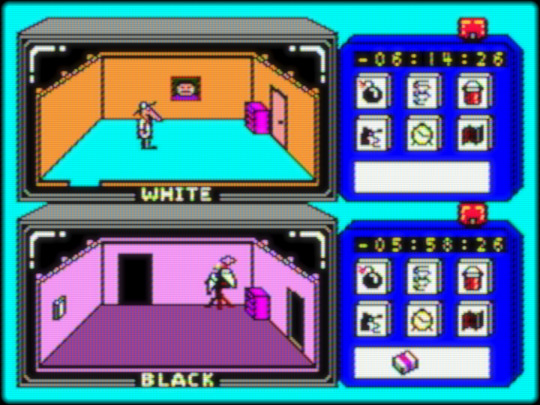
Spy vs. Spy September 20, 1986 // Sega Mark III
It's the same game that was released on the Famicom, but with the typically superior graphics of Sega's machine. There are a lot of cute animations in this one and although I only played a little, it does feel like it controls more responsively, too. I don't have any friends to play Spy vs. Spy with but if you're going to play it on console this is probably the version.
5 notes
·
View notes
Text
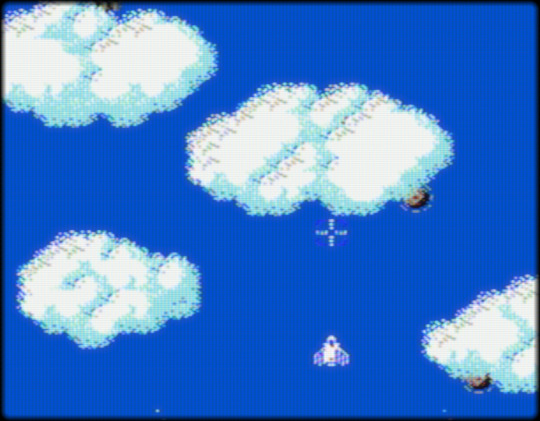
Super Xevious: GAMP no Nazo September 19, 1986 // Family Computer
The return of the king. So much is made, rightfully so, of how much Super Mario Bros. shaped the gaming space in the mid-'80s, but Xevious was just as much of an influence on the kinds of games you could get for your Famicom (or in the arcade) in this time period. Seriously, how many Xevious-likes have we played over the last couple years? The sequel to Xevious isn't satisfied with just ripping itself off, though: the "nazo" (mystery) in the title isn't just for show. The game is actually a puzzle-shooter, where you have to kill enemies and solve the puzzle in each stage to progress, which usually involves destroying some particular thing in the level, or flying into a specific part of the background.
Unfortunately, this isn't what shooter fans were looking for and Super Xevious was considered an abject failure, an early cautionary tale against innovation and in favor of endless rehashing in the gaming space. I think the puzzle elements are quite cute and fresh (even if you might need a guide to figure some of them out) but then I've also forced myself to play every Xevious clone released since 1984.
1 note
·
View note
Text
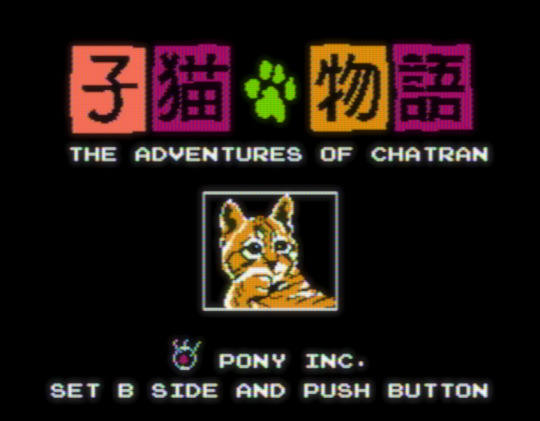
Koneko Monogatari: The Adventures of Chatran September 19, 1986 // Famicom Disk System
This game doesn't play nice with the Mesen Libretro core, so I had to play it in the standalone emulator, so I don't have any nice screenshots of the actual gameplay. You will have to take my word for it that it is a stock standard platformer where you play as a cat.
1 note
·
View note
Text
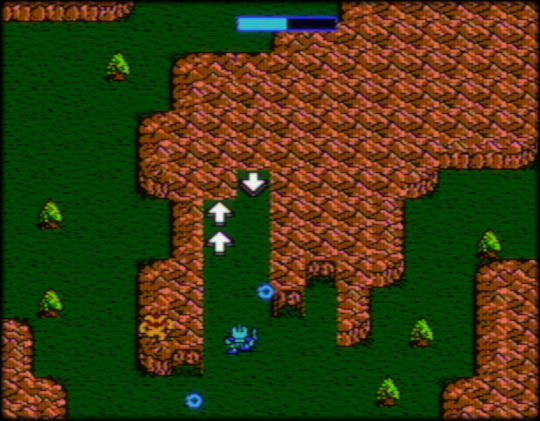
King's Knight September 18, 1986 // Family Computer
You'd be forgiven for thinking the first collaboration between Sakaguchi Hironobu and Uematsu Nobuo at Square was Final Fantasy, but nope! It's this game. I feel like it says a lot about the console market at this time that the guys most famous for making maybe the biggest fantasy RPG of all time got started making a fantasy-themed shoot-'em-up instead. Every game is shoot-'em-ups in 1986.
That said, the premise for King's Knight is pretty clever, and it makes a genuine effort at being an "RPG shmup." The game stars a party of four characters, and you have to play through each of their stages in order to power them up for the final level. If you die in a stage it's not game over; that character just dies and you move on to the next one, though I'm pretty sure it's impossible to complete the game if you let any of the party members die. The most memorable gimmick of the game, though, is the destructible terrain that you have to shoot your way through to progress and reveal various pick-ups. It's very creative, although your movement is often so restricted by the terrain that it kind of makes the game annoying to play.
0 notes
Text
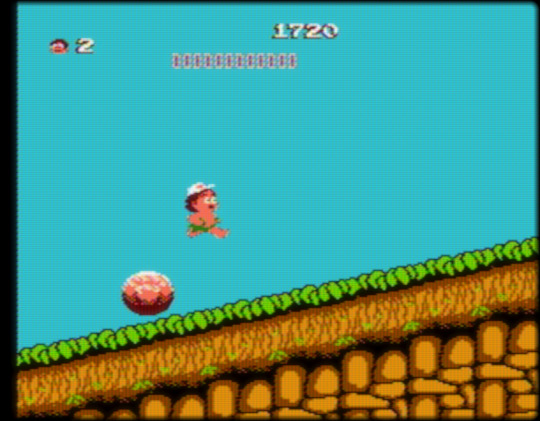
Takahashi Meijin no Boukenjima September 12, 1986 // Family Computer
We've talked about Takahashi-meijin briefly before, the Hudson Soft employee who was famous for being able to mash 16 times a second and helped the company make its name in shoot-'em-ups. Now Takahashi is finally becoming a game himself, but Adventure Island didn't start out as a game starring Hudson's ojisan spokesman. It was supposed to be a port of Sega's Wonder Boy, but Hudson had only the rights to the Wonder Boy game itself, not the character and branding, so into the game went ol' Takahashi.
Although it's obviously a bit of Super Mario trend-chasing, Boukenjima is a genuinely fun game. Much will eventually be made of how Sega's Sonic the Hedgehog captured the most fun part of Mario and made it its identity: going fast. Boukenjima kind of does the same thing, with a time-limit system, movement mechanics and enemy patterns that all conspire to force you to be constantly rushing to the other side of the screen as much as possible. There's even a skateboard pick-up that makes you move to the right automatically. You can get into a flow really easily, although it's often broken by the game's somewhat high difficulty.
0 notes
Text
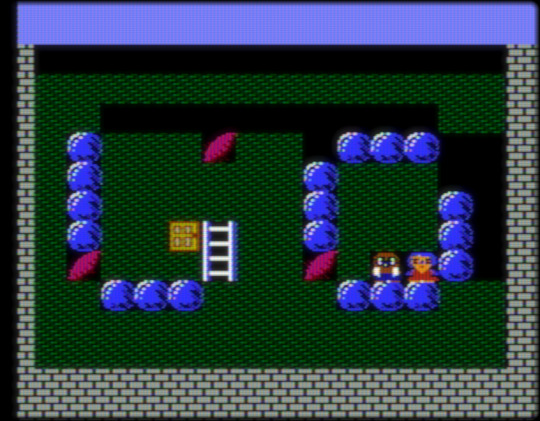
Banana September 8, 1986 // Family Computer
Sometimes I boot up a game to play for this project and I'm just like, what do you even want me to do with this? Banana was one of those times. This is a classic girlfriend-saver type game, by which I mean it's a puzzle game, where you play as a mole who can only move down and to the sides. A consequence of this limited movement is that you will pretty much soft lock yourself out of completing the puzzle all the time, since there's no way to go back up to fix a mistake. The biggest question I have though is just why is it called Banana? Apparently it takes place in "Bananaland," which just raises more questions than it answers. This is in fact an offshoot of a previous mole-themed game by the same developers which was called "Mole Mole," a perfectly reasonable title for a game about moles. Updated for the Famicom, this somehow became Banana. The mystery of "why Banana" is so deep that it's written in bold on the Game Catalog wiki. No one knows.
0 notes
Text
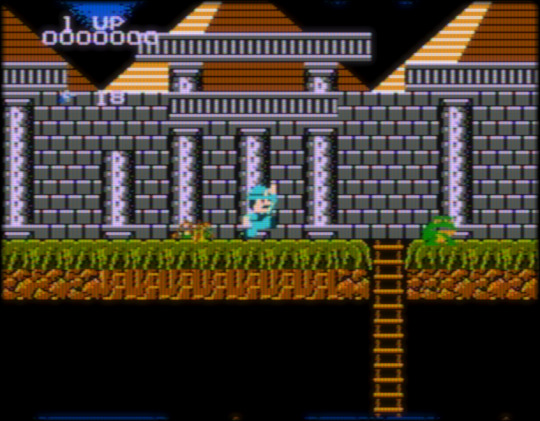
Super Pitfall September 5, 1986 // Family Computer
I don't know about anyone else my age, but for me, Pitfall was always that one Atari 2600 game that I knew the name of. I never had an Atari, have never even played one, but for some reason I was always aware that "Pitfall is that game on the Atari that everyone says is the best one." Despite an impressive legacy meaning that it wedged itself into the brains of even gamers like myself who started playing with the Nintendo 64, I have no idea if Pitfall is even good, because I've never played it. I have, however, now played Micronics's Super Pitfall and I can tell you that this game is not good. Hilariously, Activision considered licensing Atlantis no Nazo and releasing it under the name Super Pitfall instead, but we ended up getting this frankly Mario knockoff sort of game by a much-maligned developer instead.
0 notes
Text
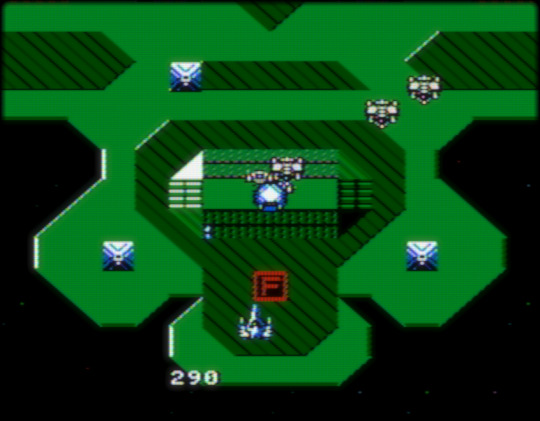
ASO: Armored Scrum Object September 3, 1986 // Family Computer
Yet another home port of yet another arcade shoot-'em-up, ASO is nothing to write home about. The titular armor that your scrummed object can equip is supposed to be the central mechanic of the game, but they were unable to bring the "assembling the armor out of parts you find" mechanic to the Famicom version, so it's not really the same game.
0 notes
Text

Choplifter September 1, 1986 // Master System
On this date in history, Sega made their first big move: they took their business overseas. Rebranded as the slightly corny-sounding Master System, the Mark III was released in North America. Although the SMS would never find much real traction itself, the lessons learned from this failure would lay the groundwork for the much more successful Genesis and the console war that would come to define the 90's. The system launched with Hang-On and a light gun game called Safari Hunt as pack-ins. Hang-On is great; Safari Hunt I couldn't get to work. The only North American-original launch title was a Master System version of Choplifter.
It plays much the same as the Famicom version we looked at a little while back, but the graphics are way better, making use of a simulated parallax effect the Famicom isn't capable of like many side-scrolling games on the system. I also found this one to have more agreeable controls. It is basically the same game, though.
0 notes
Text
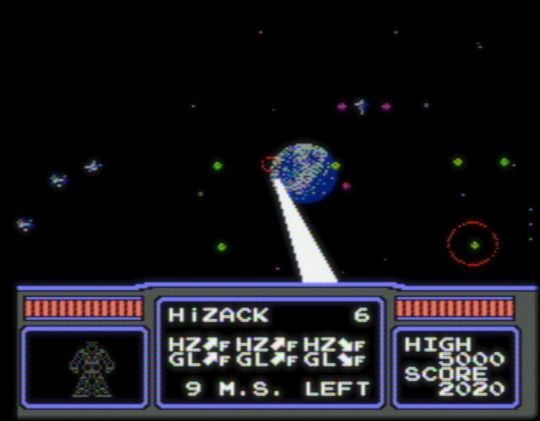
Kidou Senshi Zeta Gundam: Hot Scramble August 28, 1986 // Family Computer
Gundam fever is absolutely upon us in mid-1986. Zeta Gundam has just finished its television run in February, and we finally get the first console game based on the property. Sadly, it's not a game where you do anything very mobile suit-y at all. Instead, it's a first-person space shooter very much in the vein of, of all things, Star Luster. This means that even though you pilot the famed Zeta Gundam in this game, you never get to actually see it, which really seems like a mistake. Enemy mobile suits appear for you to shoot, but they move around so fast you never get a good look at them either. The end result is a game that doesn't really feel like a Gundam game at all, despite the FC-ified theme song constantly playing over the action. The game is also very one-note and consists of endlessly repeating stages that end as soon as you eliminate every enemy. It certainly has nothing like Star Luster's grand strategy campaign, which was the element that made that game truly great. The laser that shoots out of your viewport looks pretty cool though.
2 notes
·
View notes
Text

Sky Kid August 22, 1986 // Family Computer
Shooting games are one of the go-to genres at the moment, but Sky Kid offers quite a fun twist on the usual formula of shooting weird aliens as a spaceship. Instead Sky Kid casts you as a cartoony Red Baron-type character in a vaguely World War-ish setting, where you not only have to shoot planes and tanks but also conduct bombing runs of important targets like enemy HQs and airfields. The bombing runs are what really make the game stand out: you have to swoop down to pick up the big bomb and then weave through enemy fire and try to drop it accurately on the target. Each level is also bookended by you having to take off from one airfield and land at another; it's hardly a flight simulator but this hat tip towards realism is a nice bonus for immersion. As someone who is into flight simulators, I really wish more flight games had takeoff and landing sequences because those really are the most exciting parts of flying.
0 notes
Text
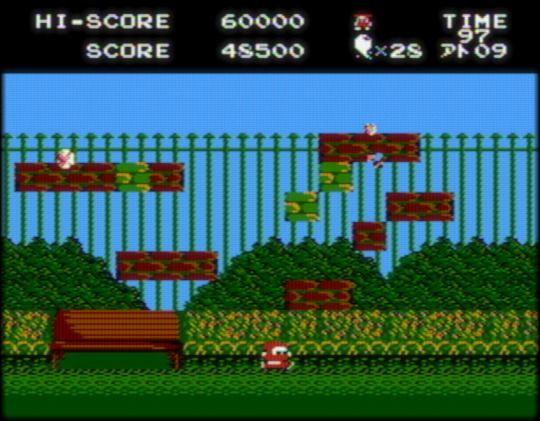
Jajamaru no Daibouken August 22, 1986 // Family Computer
Jajamaru is back again and we can see the influence Super Mario Bros. has had on the games scene, because instead of a stage-based challenge game, Jajamaru is now a side-scrolling platformer very much in the vein of Mario. The little guy still very much controls the same way, but now you gotta move inexorably to the right to progress instead of killing all the enemies. Honestly, it's weird to think there was ever a time in games where you didn't move inexorably to the right to progress. It's certainly no Mario in terms of play feel, but a good enough entry for fans of the series.
0 notes
Text

Action Fighter August 17, 1986 // Sega Mark III
Given the slim pickings for software on the Mark III, Action Fighter is really not a bad title. Initially, it's reminiscent of top-down arcade racers like Road Fighter (thinking about it now, the title is kind of a blatant rip-off of that game) with the twist that you start out as a wimpy bike, upgrade to a car, and then eventually your car gains wings and rockets and it turns into a fully-fledged top-down shooting game instead. A lot of games of this era are very one-note in that once you've played one level, you know how the rest of the game will play, so it was a nice surprise to be, well, surprised by a change in the gameplay of a game for once. The weird thing about the game is that there don't seem to be lives and you can just die as much as you like? I'm sure it lowers your score but it's weird.
0 notes
Text

Hokuto no Ken August 10, 1986 // Family Computer
Any Famicom fans who saw the Hokuto no Ken game on the Mark III and were excited to get a version on their system would have quickly had their hopes dashed when they booted up this piece of trash. Bad gramphics, bad grameplay.
0 notes
Text
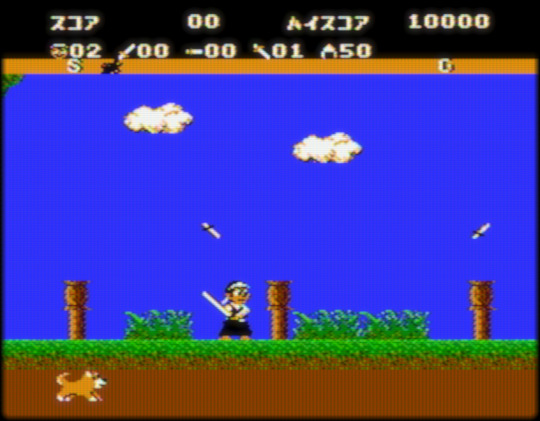
Musashi no Ken: Tadaima Shugyouchuu August 8, 1986 // Family Computer
Musashi no Ken was a manga serialized in Weekly Shounen Sunday in the 80s, and its anime adaptation would have been airing just as this game dropped on the Famicom. The manga is a kendo sports story, so of course the game is an action game where you hit stuff with a kendo stick. It's nothing to write home about, and there are some absurdly difficult sections that kept me from getting very far in this one. I like the cute dog, though.
0 notes
Text
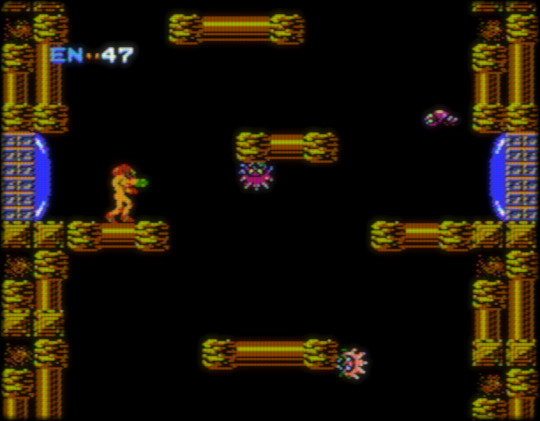
Metroid August 6, 1986 // Famicom Disk System
After Mario and Zelda, Metroid is arguably Nintendo's third-biggest first party series... At least spiritually. I mean, it's the third one that would come to mind for me, but Metroid is also kind of the red-headed stepchild of the Nintendo lineup, and it feels like each successive game only comes out after protracted periods of fans begging, "Mr. Miyamoto, may we have another?" Indeed, the series is seen as more popular overseas than it is in Japan, which likely contributes to Nintendo seeing it as a "lesser" IP in their catalog.
Maybe it's not surprising, though, because from the first notes of music on the title screen it's clear that Metroid is a far cry from the usual Nintendo fare. Far from an upbeat fantasy romp with turtles or wizards, Metroid sees you diving into an H.R. Giger/Aliens-inspired space labyrinth to fight the horrors contained within. It's atmospheric and moody, words we could hardly have applied to any other Nintendo games up to this point.
The gameplay itself is a mixed bag. The non-linear, power-up-gated exploration which eventually inspired the term "Metroidvania" is of course here and great, and none of the secrets are really so obtuse that you couldn't find them on your own. The sprawling, interconnected map is genuinely impressive for the Famicom and it feels much bigger than it actually is, adding to the sense of adventure. The problems come in with the combat. It can be hard to hit stuff with your gun (which is limited to three bullets on screen, meaning the Long Shot power-up can actually be a liability) so it can be difficult to avoid taking damage. For what its worth, the FDS version is apparently actually more difficult than the later NES conversion due to enemies having random movement patterns. And if you do take too much damage, it leads to Metroid's most infamous activity: grinding for health.
Still, the game is like nothing else on the system at the time, and deserves praise for its tone and atmosphere if nothing else.
1 note
·
View note
Text
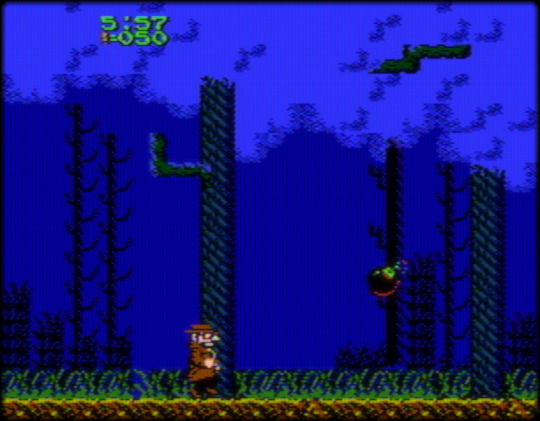
Gumshoe August 1, 1986 // Nintendo Entertainment System
This is actually the first NES-exclusive game on the blog, despite being a Nintendo first party title—an extremely rare example of one that was never released in Japan. To tell you the truth, I couldn't actually get it to work. Something is wrong with my Zapper set-up or something. I've never really enjoyed any Zapper games (they're probably more fun with an actual light gun, to be fair) and Gumshoe has a reputation of being the worst of all of them, so I guess it's not much of a loss.
0 notes